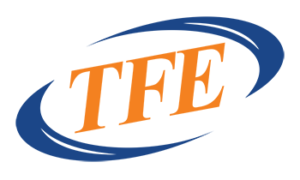Every risk management framework needs these five things
Risk is an essential aspect of any business. Whether you take strategic risks to meet long-term objectives or induce operational risks while executing your plan, risk and reward have an intimate connection that can’t be denied.
As fundamental as it is, however, dealing with risk means more than throwing your arms up in the air. Risk management is about striking a balance between taking risks and reducing them, with the following five things essential to every risk management framework.
Identify relevant risks
Every successful company has a comprehensive risk management framework in place to identify relevant risks. From the existing risks integral to your business through to the potential risks that come with growth, it’s important to measure your risk universe and assess your exposure. It’s essential that you are honest with yourself throughout this process, make clear categories based on your industry sector, and learn to differentiate between different types of risk.
While risk can be defined in many ways, a clear distinction is often made between core and non-core risk, and strategic and operational risk. Core risks must be taken in order to drive long-term growth, while non-core risks can often be eliminated completely. The difference between strategic and operational risk is almost as clear cut, with strategic risk arising when a company fails to meet market needs, and operational risk occurring when a company fails to carry out their own processes efficiently.
Measure risk exposure
Not all business risks are created equal, with a robust risk management framework needed to measure your exposure levels and create a risk profile. Effective management and mitigation plans depend on initial assessment, measurement, and ongoing evolution.
A careful and considered approach is the only way forward. For example, while some market-based strategic risks are easy to measure, certain operational risks can be extremely hard to quantify. Typical risk measures include value-at-risk (VaR), earnings-at-risk (EaR), and economic capital.
Put risk mitigation measures in place
Coming up with a plan of attack is one thing, doing something about it is something else entirely. Despite the numerous benefits of risk management, just 36% of organizations have a formal enterprise risk management program. Effective risk management demands action, with specific mitigation measures needing to align with particular risks and company objectives.
Mitigation can mean very different things, including diversification, the sale of assets, physical security, buying more insurance, or hedging your bets with derivatives or new operations. While it’s always important to think about your bottom line, you also need to measure volatility when deciding which risks to eliminate and which risks to minimize.
Monitor and report risk
A successful risk management framework needs to inspire continual changes across your business. Accurate and iterative monitoring is key in order to keep your risks down and avoid nasty surprises. A comprehensive risk management framework needs to work on multiple levels, with daily reporting needed for some risk factors and monthly or quarterly reporting needed for others. While the link between recording information and presenting it is often taken for granted, it’s always important to focus on the creation of useful reports that provide real value.
Feedback and risk governance
Risk governance is an important process that helps employees and other stakeholders to work in accordance with the appropriate risk management framework. This process typically involves feedback and communication between invested parties, with different roles and responsibilities needing to be defined, assigned, and assessed.
Once again, this is an ongoing process that may change from week to week or season to season. Risk governance often involves assigning authority to specific individuals or committees. In a recent report, 65% of boards are calling for increased management involvement in risk oversight.
When you get the balance right, risk becomes more than something you accept. When you find a way to accurately define, measure, and work with risk on a daily basis, it can be used to catalyze new opportunities and spur long-term growth. While doing business without risk is impossible, a comprehensive risk management framework helps you to navigate successfully and ensure protection from the storm.


